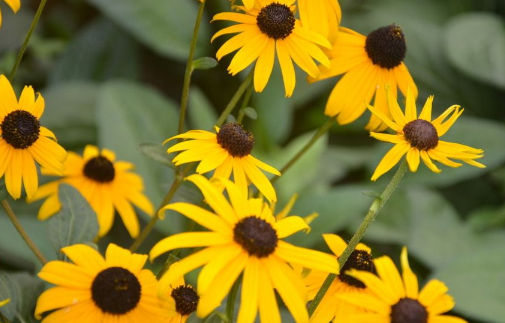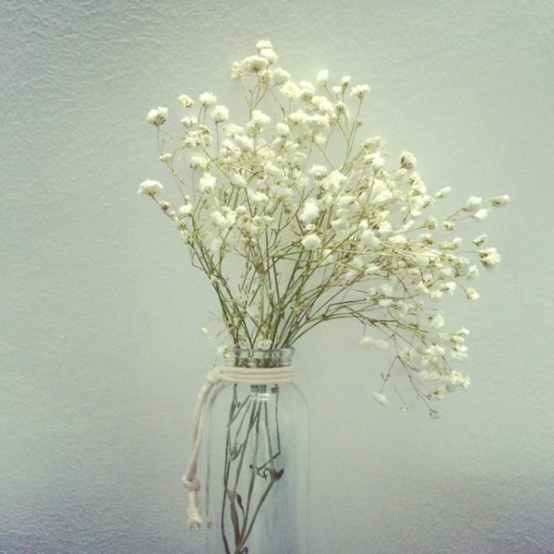Cultivation method of lotus leaf pepper grass
Light
The demand of the lotus leaf pepper grass for the sunlight is not very big, as long as give it sufficient astigmatism, do not put it under the direct sunlight in its growing period, this is very disadvantageous to the growth of the plant, because the lotus leaf pepper grass is very shady, so when the summer light is very intense, you can give it sunshade, do not worry about the sun, even in the semi-overcast environment, it can also grow very well.

Temperature
The lotus leaf pepper grass still has some requirements for temperature, and the most suitable temperature for its plant is about 20 ℃-30 ℃. Although it is shady but not cold-resistant, it is necessary to keep the plant warm when the temperature is too low in winter. The temperature around the plant in winter should be above 5 ℃, otherwise the plant may be frostbitten. In summer, the temperature is too high, which is also very unsuitable for plant growth, so the summer temperature should be below 35 ℃, which can be shaded and ventilated. These are all ways to cool down.
Watering
The lotus leaf pepper grass is strictly controlled for watering, and its soil had better remain moist, especially during the peak growth period of the plant, the moisture needed will increase, and then more attention should be paid to the wetness of the soil, so as to decide whether or not to water the plant. Generally, water the plant once a day. If the weather is too dry, spray some water on the leaves of the plant, which can increase the humidity in the air. But there should not be too much water in the soil, otherwise it may cause the root system of the plant to rot.
The above is the introduction of how to raise the lotus leaf pepper grass, let's take a look at what else we need to pay attention to?
Efficacy and function of Lotus Leaf Pepper Grass and taboo Culture methods of Lotus Leaf Pepper Grass
The lotus leaf pepper grass is a kind of foliage plant. Generally speaking, people who have experienced the cultivation of the lotus leaf pepper grass will find that they have never seen the lotus leaf pepper grass blossom. Of course, the lotus leaf pepper grass does not bloom. However, the other effects of the lotus leaf pepper grass are enough to make up for the limitation that the lotus leaf pepper grass does not blossom.
Efficacy and function of Lotus Leaf Pepper Grass
1. The foliage value of Zanthoxylum bungeanum L.
The pot plant of the lotus leaf pepper grass has ornamental value, but as long as it is watching the leaves, the lotus leaf pepper grass itself is not flowering, there is no value of watching flowers. As a kind of foliage potted plant, coupled with its own characteristics, it is of high value to be used as indoor foliage potted plant.
2. The ornamental effect of Zanthoxylum bungeanum L.
Lotus leaf pepper grass, also known as lotus leaf Jasper, has Obovate leaves, clustered together, the leaves are nearly fleshy, thicker, gray-green and with dark green veins, very lovely. Green lovely leaves, small and exquisite plants, not easy to wither that touch of green, lovable. The plant of the lotus leaf pepper grass is planted into a lovely potted plant, and the lotus leaf pepper grass also has the characteristics of shade tolerance, so it can be used as an indoor foliage plant with good ornamental and decorative properties.
3. The medicinal value of Zanthoxylum bungeanum L.
The main value of the lotus leaf pepper grass is ornamental, it also has a certain medicinal value. Lotus leaf pepper grass can relieve cough and expectoration, dispel wind and dehumidification and activate blood circulation to relieve pain. Lotus leaf prickly ash can be used to treat rheumatism, tuberculosis, asthma, pertussis, etc., as well as fall injuries, fractures and so on.
Taboos in the use of Lotus Leaf Pepper Grass
You need to follow the doctor's advice when using it.
The Culture method of Lotus Leaf Pepper Grass
1. Light and temperature
The lotus leaf pepper grass requires sufficient scattered light, and it is best to avoid strong direct sunlight during the growth period. Its negative tolerance is also very strong, when the summer sun is strong, shading is needed. In terms of temperature, the suitable temperature for the growth of Zanthoxylum bungeanum should be kept between 20 ℃ and 30 ℃, and it is not cold-resistant. It is necessary to keep warm in winter, and it is best not to be less than 5 ℃, otherwise freezing damage will occur. In summer, the temperature should not exceed 35 ℃. It should be properly shaded and ventilated to lower the temperature.
2. Soil
The lotus leaf pepper grass has a high demand for soil, which requires good fertility and drainage. General planting lotus leaf pepper grass, you can choose sandy soil, in the pot, you can use several media mixed soil, such as peat soil, rotten leaf soil, perlite and so on, mixed according to a certain proportion.
3. Watering and fertilizing
Lotus leaf pepper grass does not require high humidity, but moist is the best. During the growing period of the lotus leaf pepper grass, it is necessary to keep the basin soil moist and water once a day. The dry weather can spray water on the leaves. But be careful that the soil is not too wet so as not to rot the roots. Fertilization can be applied once or twice a month, in order to make the leaves green and beautiful, you can apply more nitrogen fertilizer.
Growth habits of Zanthoxylum bungeanum
The lotus leaf pepper grass likes the warm and humid growth environment, and the suitable temperature for growth is between 20 ℃ and 30 ℃. When the temperature is below 5 ℃, the lotus leaf pepper grass will be frostbitten. The lotus leaf pepper grass likes the bright scattered light, can bear the shade, does not like the too bright direct light. Fertile humus is the best soil for cultivation.
Nelumbo nucifera is a kind of plant with medicinal value. Generally speaking, we can treat related diseases with the help of other herbs. However, knowing that the lotus leaf pepper grass can cure the disease does not mean that we can make our own methods of use, but need to be diagnosed and matched by a doctor.
Culture methods and matters needing attention of Lotus Leaf Pepper Grass
Latin name Peperomia clusiaefolia
The plant kingdom.
Family Piperaceae
Belongs to the genus Piper
Plant the lotus leaf pepper grass
Nelumbo nucifera is a perennial evergreen herb with a height of 15ml / 20cm. No main stem. Leaves clustered, nearly fleshy, Obovate, grayish green mixed with dark green veins.
1. Plant materials
Category: perennial herbs, also known as pepper grass, round leaf pepper grass. Native to Brazil, the common varieties cultivated are its varieties of Zanthoxylum bungeanum.
2. Morphological characteristics.
Spikes, gray-white. The cultivated species are variegated, with fleshy fleshy leaves, green in the middle of the leaves, with a broad golden edge, and bright leaves with heart-shaped leaves with metallic luster. Wrinkled leaf type, deeply sunken veins, forming wrinkled leaves, very interesting.
3. Distribution of producing area
Mostly distributed in tropical and subtropical areas
- Prev

How to sow Chrysanthemum morifolium seed
We can harvest the seeds of black chrysanthemum in the inflorescence of black heart chrysanthemum in autumn. After choosing a good season, we should also prepare the soil for sowing black chrysanthemum. The soil had better choose good drainage, and the soil is rich in humus and nutrients, which is beneficial to the soil breaking and germination of black heart chrysanthemum seeds.
- Next

Aquaculture and nursing care full of stars
First, the soil is suitable for the star in the soft soil, so that its roots can stretch and effectively absorb the water and nutrients in the soil. Generally speaking, the star prefers alkaline soil, so the soil contains certain alkaline substances, which will make the star grow more healthily.
Related
- Fuxing push coffee new agricultural production and marketing class: lack of small-scale processing plants
- Jujube rice field leisure farm deep ploughing Yilan for five years to create a space for organic food and play
- Nongyu Farm-A trial of organic papaya for brave women with advanced technology
- Four points for attention in the prevention and control of diseases and insect pests of edible fungi
- How to add nutrient solution to Edible Fungi
- Is there any good way to control edible fungus mites?
- Open Inoculation Technology of Edible Fungi
- Is there any clever way to use fertilizer for edible fungus in winter?
- What agents are used to kill the pathogens of edible fungi in the mushroom shed?
- Rapid drying of Edible Fungi

